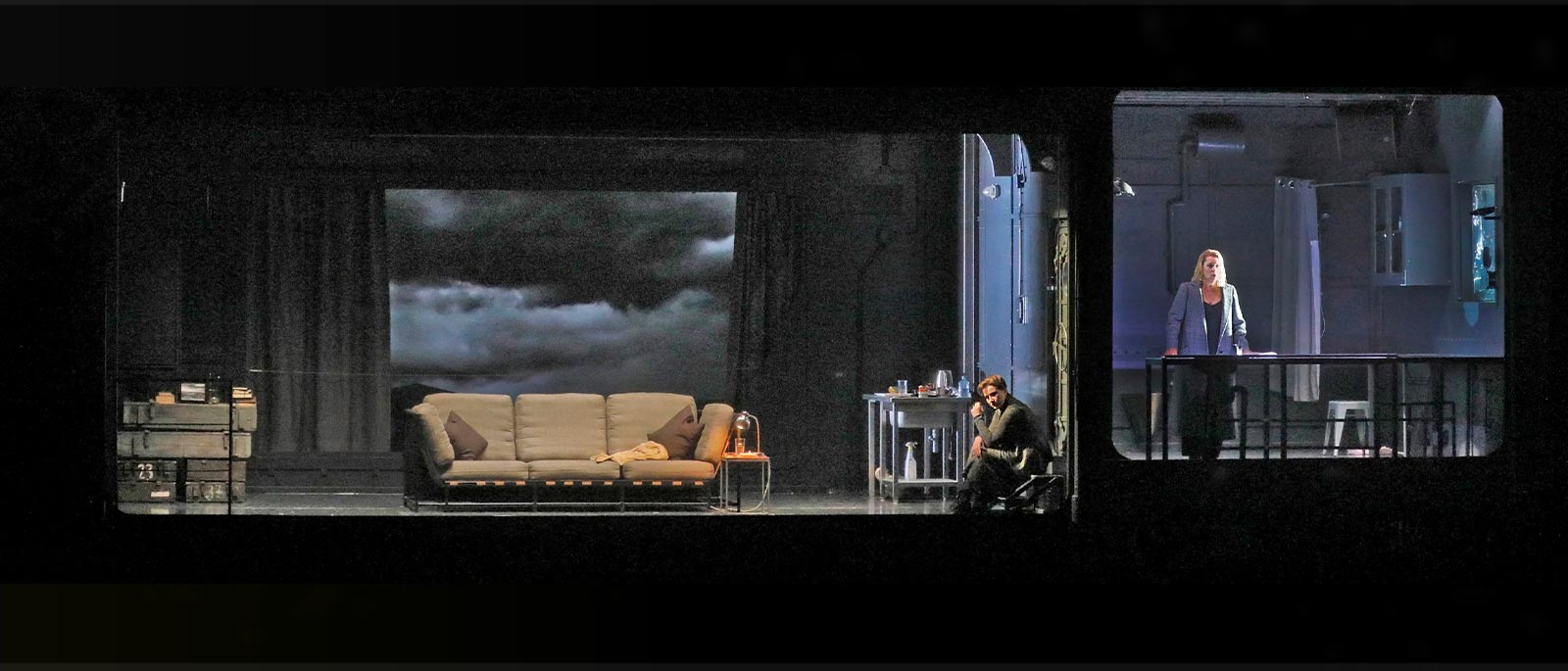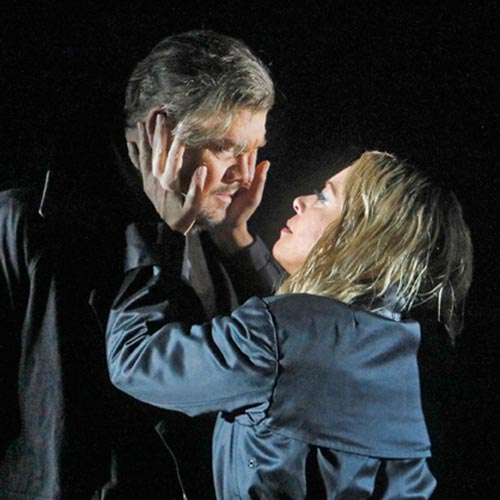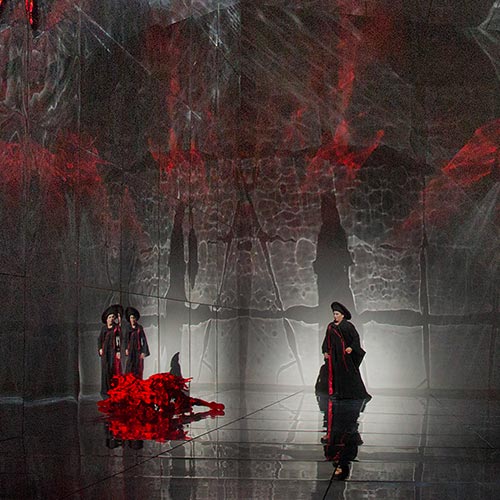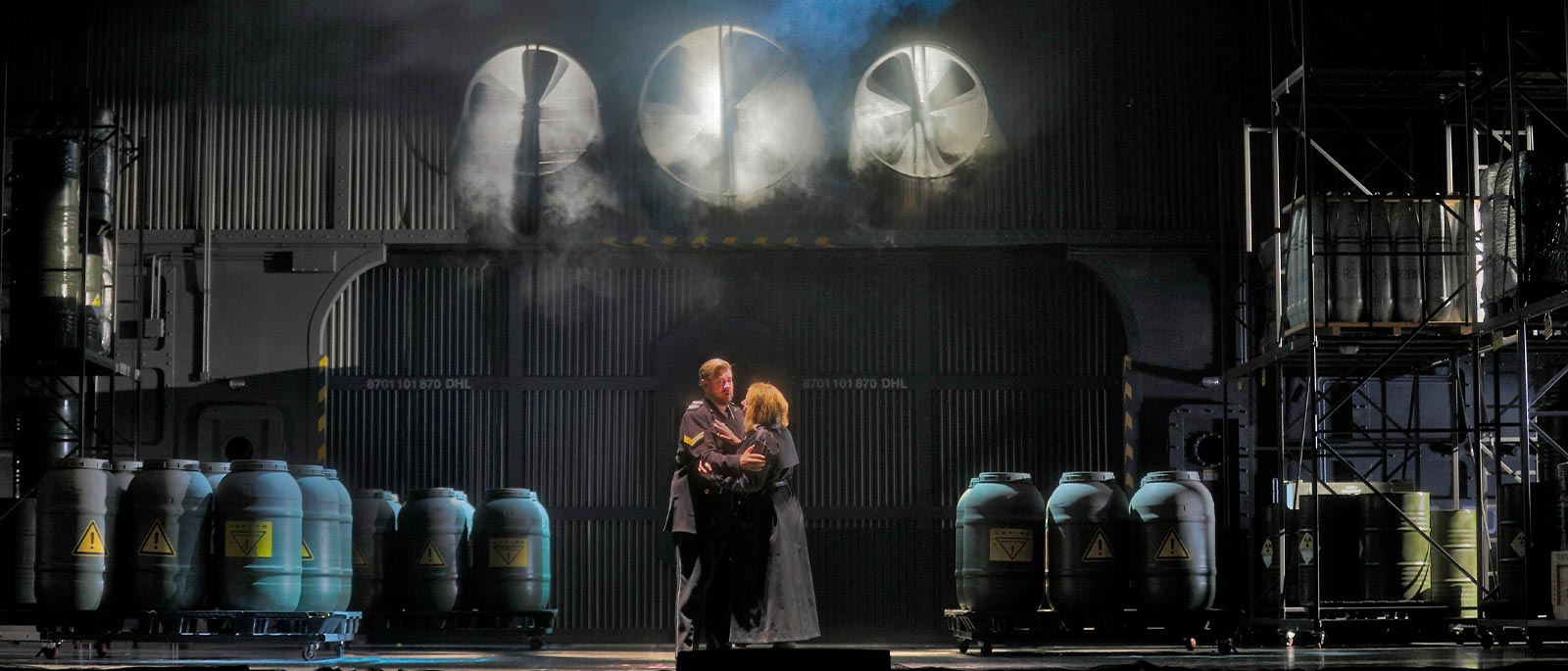
Richard Wagner
Tristan und Isolde
This production ran: Jan 1 - Dec 31
This production is in the past.
Overview
Following her blazing performances as Brünnhilde in the Met’s Ring cycle in 2019, Christine Goerke scales another of Wagner’s soprano peaks, starring opposite heroic tenor Stuart Skelton in Mariusz Treliński’s intriguing staging of one of the greatest love stories ever told. Hartmut Haenchen makes his Met debut conducting an all-star supporting cast of Wagnerians, including bass Günther Groissböck as King Marke, mezzo-soprano Ekaterina Gubanova as Isolde’s attendant Brangäne, and bass-baritone Greer Grimsley as Kurwenal, Tristan’s loyal servant.
Co-production of the Metropolitan Opera, Festival Hall Baden-Baden, Teatr Wielki-Polish National Opera, and China National Centre for the Performing Arts (NCPA) Beijing
Production a gift of the Estates of Alan and Ruth Broder
Additional funding from Marina Kellen French and the Gramma Fisher Foundation, Marshalltown, Iowa
Languages
Languages sung in Tristan und Isolde
Sung In
German
Titles
Title languages displayed for Tristan und Isolde
Met Titles In
- English
- German
- Spanish
Timeline
Timeline for the show, Tristan und Isolde
Estimated Run Time
4 hrs 46 mins
-
House Opens
-
Act I
81 mins
-
Intermission
34 mins
-
Act II
63 mins
-
Intermission
32 mins
-
Act III
76 mins
-
Opera Ends
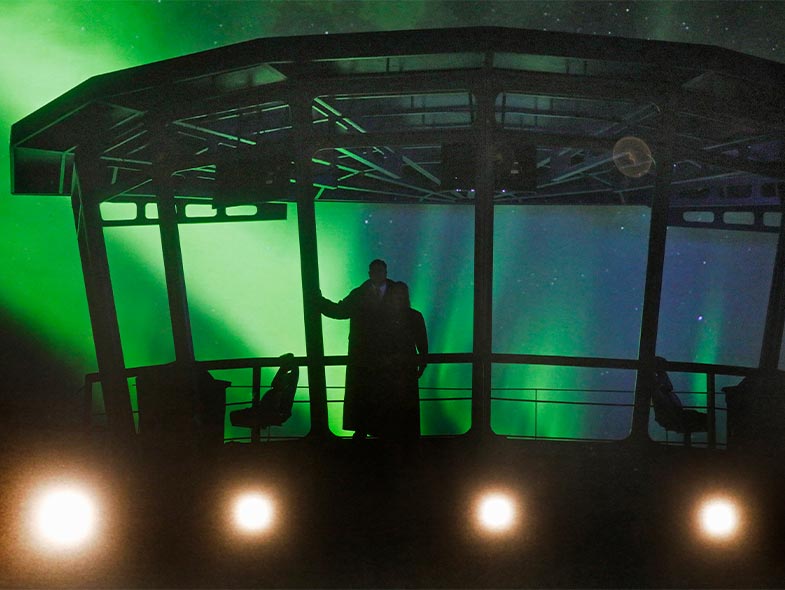
World premiere: Munich Court Theater, 1865. Wagner’s breathtaking meditation on love and death holds a unique place in the opera world. Its music has astounded, infuriated, and inspired audiences since it was first heard, and the title roles are acknowledged as among the most extraordinarily demanding in opera. The vocal challenges, the sumptuous symphonic scale of the orchestral writing, and the mystical nature of the story, with its opportunities for creative visual design, make this awe-inspiring work a phenomenon of the repertory.
Creators
Richard Wagner (1813–1883) was the controversial creator of music-drama masterpieces that stand at the center of today’s operatic repertory. An artistic revolutionary who reimagined every supposition about theater, Wagner insisted that words and music were equals in his works. This approach led to the idea of the Gesamtkunstwerk, or “total work of art,” combining music, poetry, architecture, painting, and other disciplines, a notion that has had an impact on creative fields far beyond opera.
PRODUCTION
Mariusz Treliński
SET DESIGNER
Boris Kudlička
COSTUME DESIGNER
Marek Adamski
LIGHTING DESIGNER
Marc Heinz
CHOREOGRAPHER
Tomasz Jan Wygoda
PROJECTION DESIGNER
Bartek Macias
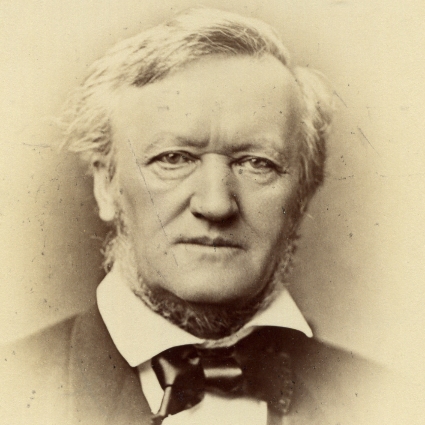
Composer
Richard Wagner
Setting
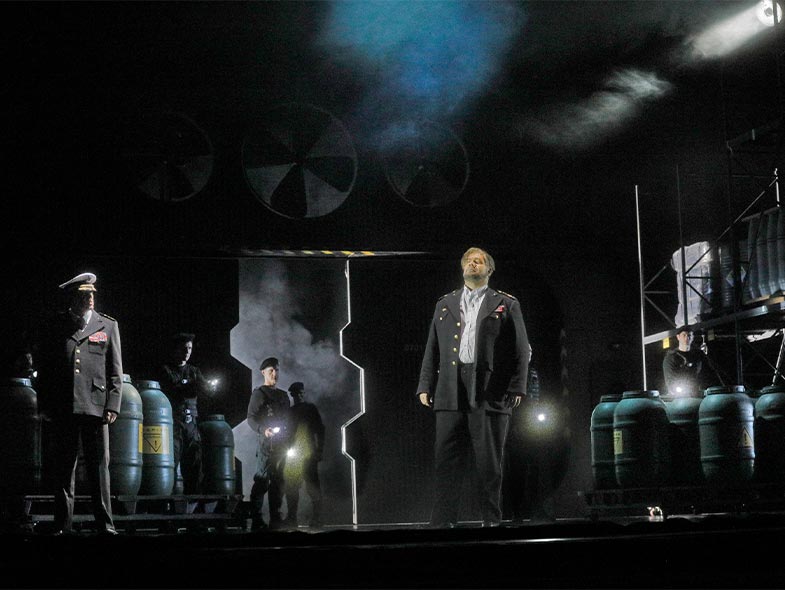
The three acts of the opera are originally set, respectively, aboard a ship on the Irish Sea, in Cornwall (southwestern Britain), and in Brittany (northwestern France). The many versions of this story all pay homage to the Celtic ambience and probable origin of the tale. Wagner’s preservation of this context emphasizes several key themes associated with ancient Celtic culture: mysticism, knowledge of the magic arts, an evolved warrior code, and a distinctly non-Christian vision of the possibilities of the afterlife.
Music
Volumes have been written about the influential score of Tristan und Isolde. The music is built on the idea of a great yearning, irresistible and self-perpetuating, that cannot be fulfilled in this life. The prelude sweeps the listener into an ecstatic yet tortuous world of longing, and the vocal parts are of unique stature. The opera culminates in Isolde’s famous final aria, “Mild und leise,” with a final octave leap that concludes this unique musical-dramatic journey.
